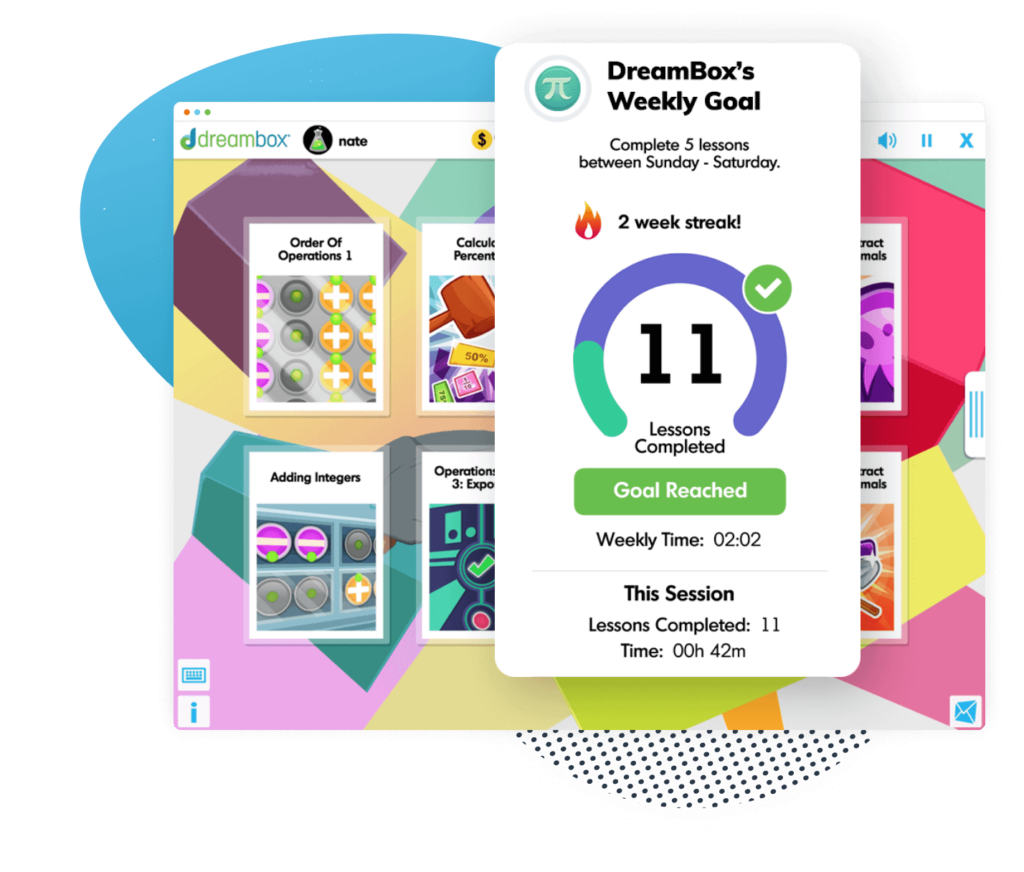Homeschooling Preschool: Top Curriculums & How to Tips
Preschool homeschooling is fun and easy! Read on to discover the curriculum choices, ideas, and activities that will inspire the joy of learning in your homeschooled preschool child.

Author
Lisa Luciano
Published:
April 2025
Key takeaways
- • Discover the goals of preschool homeschooling.
- • Get help choosing a preschool homeschool curriculum.
- • Gather ideas for fun preschool learning activities.
If you are planning your child’s preschool homeschool year, I envy you. As a 28-year veteran homeschooling mom, I would trade preschool activities for algebra problems any day. Homeschooling preschoolers is so much fun because they are so eager to learn. To watch a curious preschooler discover concepts for the first time is tremendously rewarding for parents. Homeschooling preschool should never be dry, dull, or involve many worksheets. This is the ideal time to give your child a taste of the thrill and joy of learning. Preschool homeschool is all about hands-on activities, play-based learning, movement, games and discovery, punctuated by short bouts of formal instruction. Homeschool preschool is a great time to introduce basic concepts within a flexible schedule that lays the groundwork for the homeschooling years ahead. Read on to learn what you need to know about homeschooling your preschooler.
What schedule is best for a preschooler?
The best homeschool preschool schedule is one that works best for your family. However, it’s usually best to do the most academic activities (such as practicing sounds or tracing numbers) when your child is most alert and focused. Typically, this is in the morning, after a good night’s sleep and breakfast. The afternoon can be a time for hands-on activities, life skills, and outdoor play. Surprisingly, the ideal amount of time to homeschool your preschooler is around one to two hours. That time is best divided into 15-minute sessions, with plenty of time for movement and play. Here is a sample schedule to consider for preschool homeschooling:
- Morning routine: simple chores and breakfast
- 9:00 a.m. indoor or outdoor active play
- 10:00 a.m. snack time
- 10:15 a.m. parent read-aloud, look at picture books
- 10:45 a.m. math or literacy games
- 11:00 a.m. music or art
- Noon: lunchtime / naptime
- 2:00 p.m. hands-on activities like blocks and puzzles
- 3:00 indoor or outdoor free play
What subjects are taught in preschool?
Preschoolers are usually between 3-5 years old, and homeschooling for this age is focused on laying a foundation for future learning through hands-on activities and play-based learning. Here are some of the subjects that are taught in preschool:
- Literacy and Language: learning letter sounds, print awareness, vocabulary
- Math: counting, number recognition, shapes, patterns, essential addition and subtraction.
- Social Development: practicing social skills, working together, and self-control
- Science: exploring nature and how things work
- Play-Based Learning: using play to learn important concepts
- Social Studies: learning about people, families, and groups
- Motor Skills: doing something active every day
- Art and Music: exploring creativity and beauty
- Practical Life Skills: working and learning together
Benefits of using a preschool homeschool curriculum
Every family is unique. Some parents opt to dive into preschool homeschooling without a curriculum, choosing to create their own learning activities. At the preschool stage, a curriculum may not be necessary, but many families find it helpful to follow one. Using a preschool homeschool curriculum has benefits, helping you:
- Nurture your child’s natural curiosity and personal growth.
- Prepare your child for kindergarten and the future.
- Provide a wide range of new experiences and challenges.
- Improve your child’s skills and confidence.
- Interact with and track your child’s growth.
- Teach your child what should be covered in preschool.
- Gain ideas and activities that will teach your child new skills.
Factors to consider when choosing a homeschool preschool curriculum
There is a long list of curriculums that offer homeschool math and reading, plus an introduction to various subjects. So, what are the most important things to consider when choosing a preschool curriculum? Try to select one that:
- Will engage your child and be easy for you to use.
- Includes hands-on activities and tactile exploration.
- Is play-based, giving activities and game suggestions that will help your child learn.
- Teaches beginning literacy and math skills.
- Is sequential, organized, and easy to follow.
Table of contents
Get help with homeschool math with DreamBox!
Top recommendations for homeschooled preschoolers
The best curriculum for your family is one that syncs with your child’s learning style and your family routine. Don’t be hesitant to mix and match curriculums or adapt lessons to fit your child’s needs. To help you in your search for the right pre-K homeschool curriculum, here is a list of choices that have been tested and loved by homeschooling parents just like you.
Shiller
Shiller is a Montessori-inspired curriculum with easy planning for parents. Shiller offers a hands-on, multi-sensory approach to math and language arts. The educational kits are designed to cover several grades, making it easier to meet your child’s pace without buying multiple levels of curriculum.
Timberdoodle
The Timberdoodle curriculum kits include hands-on learning activities in addition to standard books. The curriculum includes math, language arts, history, geography, thinking skills, science, geography, art, and STEM activities. The Timberdoodle Company has been a big favorite of our family for decades, and we have appreciated their assortment of unique homeschool supplies and excellent customer service.
Blossom and root
Blossom and Root is a nature-based digital curriculum for Pre-K through 5th grade. The lesson plans are rich in literature, nature, and hands-on activities. Not all subjects are included in the basic curriculum; some are purchased separately.
Before five in a row
Before Five in a Row lessons are based on 24 classic children’s books, and the curriculum is divided into two parts. Part One includes hundreds of ideas and easy lessons, and Part Two is focused on learning through everyday activities. Updated with engaging illustrations and fun elements such as animal classification cards, Before Five in a Row is a top favorite for homeschooling families.
Delightful reading
Delightful Reading is an engaging, comprehensive reading program that guides children from preschool to elementary years. Using three sequential kits, they provide hands-on activities for phonics and sight word reading. Level One includes playful activities that introduce toddlers and preschoolers to letters and sounds. Level Two gives 90+ interactive games that focus on blending sounds into words. Level Three ushers students into the skill of reading sentences. With a variety of hands-on activities, Delightful Reading builds essential skills in a fun way, and it’s a popular choice for homeschooling families.
Moving beyond the page
With a tagline that says “Read broadly, think deeply, learn creatively”, Moving Beyond the Page is another homeschooling family favorite that offers a project-based approach to learning. Offering both online access and printed materials, Moving Beyond the Page is for students aged 4-14 and covers math, language arts, science, and social studies.
Homeschool preschool activity ideas
Even if you find the perfect curriculum, it doesn’t hurt to have some additional activities to help when homeschooling preschool. Here are a few ideas to get you started:
Literacy and language:
- Read Aloud. The best way to get your child to love reading is to read to them as often as possible.
- Read with expression. Reading with expression makes a story come to life and triggers the imagination. If a sentence has an exclamation point or a question mark, read it accordingly and tell your child what each of those marks means.
- Ask questions before and after reading a book.
- What do you think this book is about?
- What do you think will happen in this book?
- Were you surprised by the ending?
- What might have happened if…?
- Point out letters and words in daily life. Encourage your child to recognize letters and words on road signs, posters, and billboards.
Write your child’s story. Writing your child’s story through a dictation/narration approach will delight students and help them connect the dots when it comes to print awareness.
Math:
- Use tactile activities to enhance number learning. Have your child trace numbers into sand, slime, or snow.
- Put number sense into practice while cooking together.
- Show your child how to measure using a measuring tape. Then let them go as they measure their shoes, their Lego box, and everything in sight.
Try these fun preschool math activities.
Science:
- Explore nature through trail walks. Point our bird nests, leaf shapes, and signs of animal activity.
- Track seasonal signs. Notice and discuss why the leaves change color, why birds fly south, etc.
- Plant a garden. Even if you don’t have space or time for a full garden, planting a bean seed in a clear cup can offer a wealth of learning about seeds, roots, stems, and what a plant needs to grow.
Social studies:
- Draw circles on paper to show the differences between city, country, and continent.
- Make a family tree.
- Discuss cultural differences.
Motor skills:
- Get outside as much as possible. Experts recommend 60 minutes of moderate to vigorous daily activity for kids.
- Practice throwing and catching balls of various sizes.
- Include your child in household chores and kitchen duties.
Art and music:
- Listen to music while coloring.
- Dance to lively music.
- Visit an art museum.
- Create seasonal art for home display or gift-giving.
Preschool hands can help
Practical life skills are an important part of preschool learning. When children learn how to do routine chores, it can build their confidence and capability. Homeschool allows you the time to involve your child in the daily work of the household. It takes time to teach your child simple household tasks, but it is an important investment in your child’s life (and will eventually help you out, too.) Every child is different, but at the preschool age, many children can learn to do the following:
- Wipe down kitchen appliances
- Throw things away
- Fold small towels
- Help set the table
- Wash toys in a sudsy sink
- Pick up toys
- Sweep floors
- Water houseplants
- Make the bed with help
- Put dishes away
- Feed pets
- Sweep floors
- Empty trash cans
- Assist a parent in the kitchen
- Wipe down walls and doorknobs
- Dump dirty laundry
- Move clothes from washer to dryer
- Wash small loads of dishes
- Put away groceries
- Help with meal preparation
- Set the table
- Vacuum
Conclusion
Experts say that from ages 2-7, the number of brain connections (synapses) doubles, allowing children to learn faster than at any other time in their lives. The experiences throughout this phase can have a great impact on their development. There are four ways to maximize this as you homeschool your preschooler:
- Encourage a love of learning. Let them enjoy the process, with all the mistakes, and don’t focus on performance.
- Focus on introducing your child to a broad range of activities, instead of concentrating deeply on any one subject. Exposing your child to a variety of activities allows them to sample different fields and become more creative and well-rounded. They can specialize in their interests later.
- Don’t underestimate the value of play. Play is healthy and educational. It helps your child develop cognitive, physical, social, and emotional skills. Play reduces stress, propels the imagination, and encourages creativity. Play provides a wealth of rich learning opportunities, so be sure to make time for play in your homeschool preschool.

The math program that drives results
Get started today!
DreamBox adapts to your child’s level and learning needs, ensuring they are appropriately challenged and get confidence-building wins.
FAQs
One of the goals of homeschooling preschoolers is to give them a taste of the joy of learning. At the preschool age, learning activities should be lighthearted, fun, and include plenty of hands-on activities and engaging exploration. A homeschool preschool schedule is most effective in short, 15-minute increments with breaks for movement.
There are many homeschool preschool curriculums, but it’s best to find one that suits your family. After you decide which subjects you’d like to cover with your child, choose a curriculum that teaches the subject matter with an engaging, hands-on approach.
Homeschooling a preschooler doesn’t take all day. One or two hours of play-based, hands-on activities are ideal for developing skills in a fun, appealing way.
Some families don’t invest in a homeschool preschool curriculum. Instead, they create their own preschool plan. Online resources can help you teach beginning literacy and math through outdoor exploration, play-based learning, educational games, and your daily family routine.
Take at home math practice to the next level
Empowering parents and educators to make math practice more impactful. Plus, your kids will love it.


About the Author
Lisa Luciano
Lisa Luciano earned a B.A. in Elementary Education from Wheaton College. After graduation, she worked at an Asian refugee camp for a year, then taught in the St. Paul Public Schools. She has been a homeschooling mom for the past 28 years. In 2021, Lisa launched a freelance writing business (Eleven Star Content, LLC). In her free time, she enjoys sewing for her Etsy shop and listening to audiobooks while walking. Lisa and her husband José have eleven children and live in rural Minnesota.